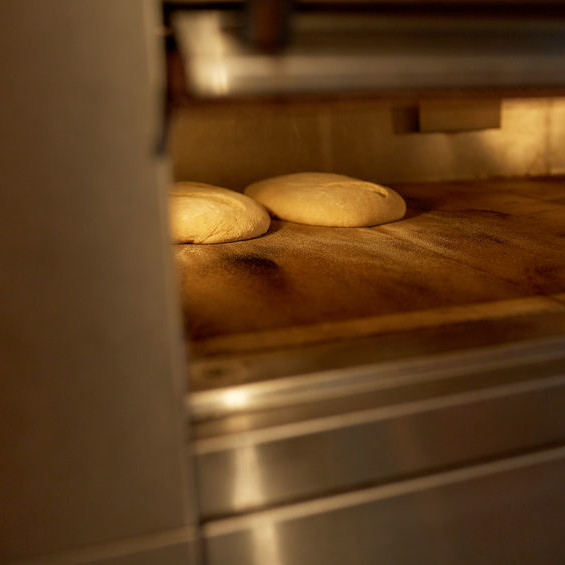
Oven Design
What is Oven Design?
Ovens are an integral component of food and other manufacturing processes. Their design takes into consideration the overall plant layout as well as the type and estimated production volume.
In baking operations, ovens are responsible for transferring heat to bring dough pieces to baking temperatures. Baking is a simultaneous heat and mass transfer unit operation.
- Electricity
- Fuels (natural gas, liquefied petroleum gas)
- Steam (generated in a boiler)
An oven is expected to achieve heating at an optimum rate and at the highest efficiency levels. This is essential for minimizing energy waste and operating at maximum capacity.
How does it work?
Ovens are the most critical unit operation in baking plants and can be responsible for limiting their capacity. Therefore, the need for proper oven design to successfully satisfy present and future demands.
No oven can be properly designed without completing the product development phase and understanding the requirements of the products to be baked. Composition, product quality characteristics, physical properties of input/output streams and baking specifications are few of the criteria that should be established.
Phases of oven design1,2
- Mass and energy balances: flow rates (units or pieces /pounds per batch or min) and composition of input and output streams are determined
- Baking process modeling: lab-scale experimentation and use of mathematical and empirical expressions (e.g. relevant process variables) to describe the required baking process
- Process simulation: use of software and engineering data collected during modeling to measure and evaluate the real performance of the baking process
Variables that can be effectively monitored during the process (baking temperature, conveyor speed, bake time, heat flux, air humidity and flow rate) are selected and values are assigned:
- Equipment sizing: calculation of the size and characteristics of the equipment according to process specifications
- Equipment rating: calculation and selection of the operating conditions given process specifications and equipment size and characteristics
- Equipment costs
Application
Relevant considerations for oven design:3,4,5
- Unit weight of dough pieces/finished product to be processed
- Product dimensions (width, thickness and length)
- Capacity/throughput required (according to current demand) plus long-term business growth (units/batch or units/min)
- Surface area required to bake products at a given production rate
- Mode of operation: batch or continuous mode
- Selection of the proper combination of heat transfer mechanisms (radiation, convection and conduction) required to obtain the correct baking profile and allow for maximum heat exchange efficiency
- Total energy required to produce certain heat flux to bake a full batch of product (KWh), according to total bake time, heat surface, heat transfer mechanisms and heat losses within equipment
- Heat flux (BTU/hr·ft2 or W/m2) required to bake product
- Hygienic design
To design an oven, several engineering aspects need to be integrated and brought together, including:
- Electrical components (e.g. motors)
- Mechanical components (e.g. conveyors, gears, transmission belts, chains, air blowers, air impingement or hot gas jetting systems, extraction systems)
- Thermal components (e.g. heat exchangers, steam generation, steam dampers, ribbon burners, insulation materials to minimize heat loses)
- Condensate collection systems
- Electronics and automation systems
- Instrumentation and control devices
- Fuel supply and ancillary systems
- Structure and construction components (e.g. equipment walls, supports, hoods)
- Explosion relief systems
- Heat recovery systems (use of waste heat and water vapor)
Thermal profiling is a very useful tool when designing ovens and testing their performance. Knowing the total radiant and convective heat provided by the equipment helps engineers improve energy transfer flaws and areas inside the equipment where very high/very low heat fluxes are generated.
References
- Maroulis, Z.B., and Saravacos, G.D. “Principles of Food Process Design.” Food Process Design, Marcel Dekker, Inc., 2003, pp. 37–87.
- Rahman, M.S., and Ahmed, J. “Food Process Design: Overview.” Handbook of Food Process Design, Blackwell Publishing Ltd., 2012, pp. 18–23.
- Purlis, E. “Baking Process Design.” Handbook of Food Process Design, Blackwell Publishing Ltd., 2012, pp. 743–765.
- Davidson, I. “Oven Designs.” Biscuit Baking Technology: Processing and Engineering Manual, 2nd edition, Academic Press, Elsevier Inc., 2016, pp. 73–91.
- Davidson, I. “Oven Construction: Direct Gas-Fired Ovens.” Biscuit Baking Technology: Processing and Engineering Manual, 2nd edition, Academic Press, Elsevier Inc., 2016, pp. 113–136.

